Actually, I'm not in the trenches, but I am digging some. It finally cooled off enough that I can start the work to help contain some of my more troublesome running bamboos.
This Semiarundinaria okuboi is the first, as it's the main offender right now. My rhizome pruning didn't get all of the escapees this year, so I need to take it to the next level. Let the digging begin!
I've read that the Semiaruninaria genus has rhizomes that go deeper than those of the Phyllostachys genus, making it harder to rhizome prune. I'm not sure that's true, and I can't verify with this plant because of the raised bed. Barriers like this will deflect rhizomes and possibly make them go a bit deeper than they normally would, at least for a little distance before coming closer to the surface.
I removed most of the renegade shoots earlier this year, but there are a few smaller ones just outside the box that I didn't get:
Digging a trench will make it much easier to spot the escaping rhizomes.
Unfortunately the digging itself isn't easy, especially with the soil as dry as it was when I started. Of course, tool choice is important too -- the wrong tool can make any job a lot harder than it needs to be. I started with my square spade (my digging tool of choice), which was the wrong tool.
This is the right tool to use for this job:
Even with the mattock this job took a few hours, spread over multiple mornings.
I encountered many rhizomes along the way, which I just chopped out or cut with loppers:
There were a few tree roots in this area too, which made things more difficult (there is one in the above photo on the right). They don't cut as easily as the bamboo rhizomes.
It's surprising how much soil comes out of a hole like this! I used most of it to build up the mound around the giant cane bamboo I planted recently:
Some of it just got dumped in a pile to be used as needed in the future.
I had to tie the plant back to give me room to dig. Bamboo leaves can cause lots of little "paper cut" scratches on exposed arms, and getting poked in the eye with a bamboo leaf tip isn't nice. I used my hose for this:
That is one fancy and attractive knot!
So after much digging, soil removal, and wheelbarrowing, the job is done:
The next step of this process is to fill the trench with mulch. Leaving the trench open is unattractive, dangerous, and not permanent -- the trench walls will eventually start eroding and collapsing. I'll be able to drag my mattock through the mulch next year to find any rhizomes that have entered the trench, then I can just cut them off. No more digging required!
So even though it took a bit more work to get the trench dug, it will pay off by making rhizome pruning so much easier for the next several years. With 10 or so bamboos to rhizome prune each year, reducing the effort is a very good thing indeed!
.
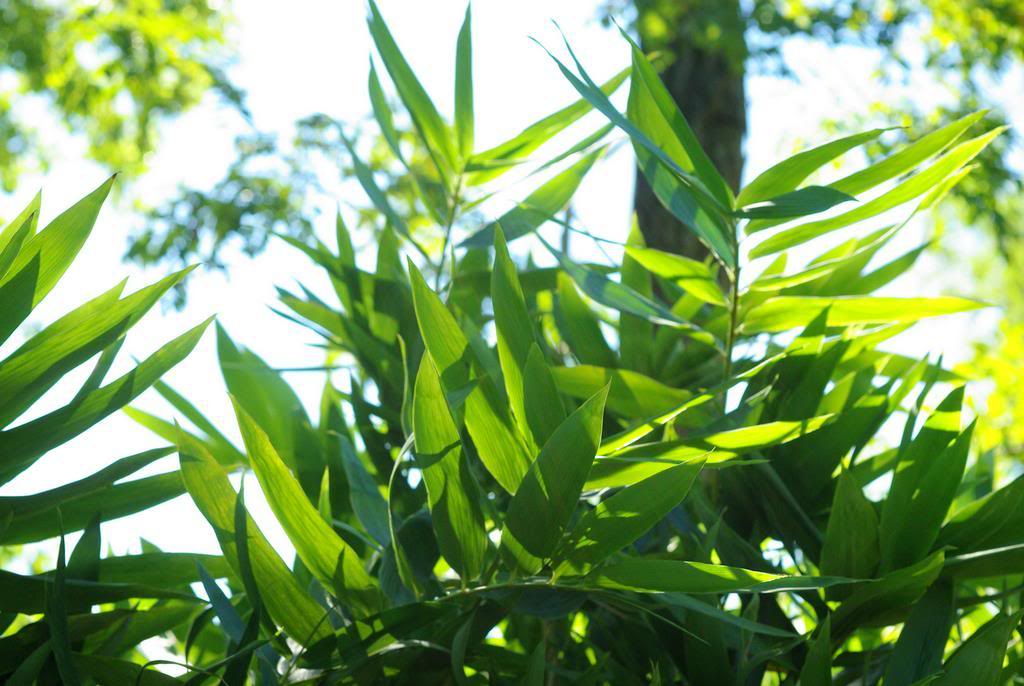
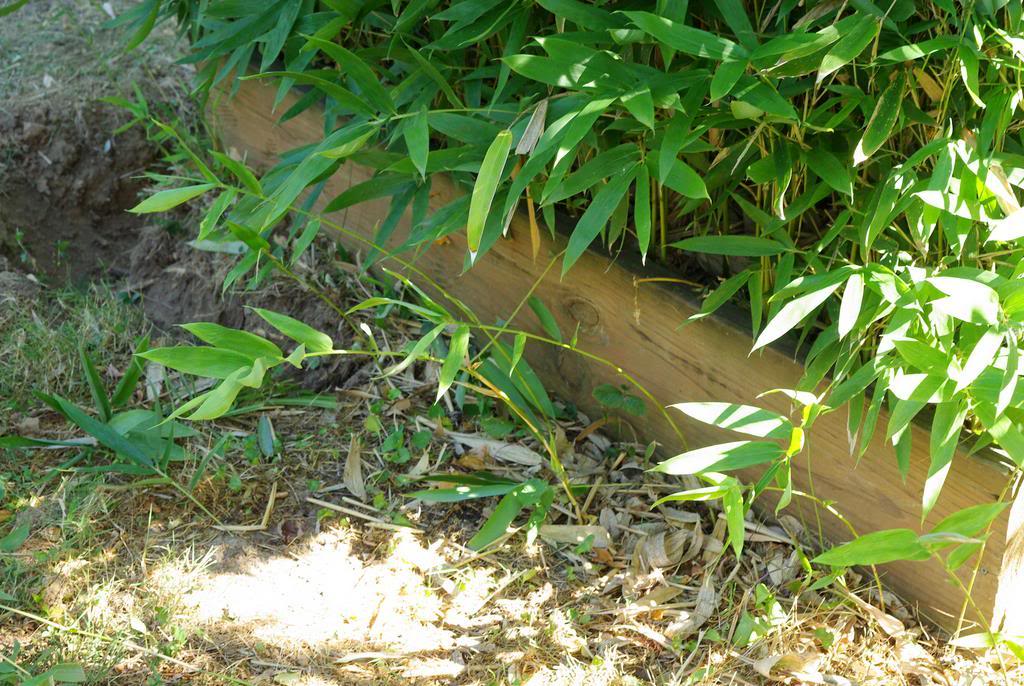
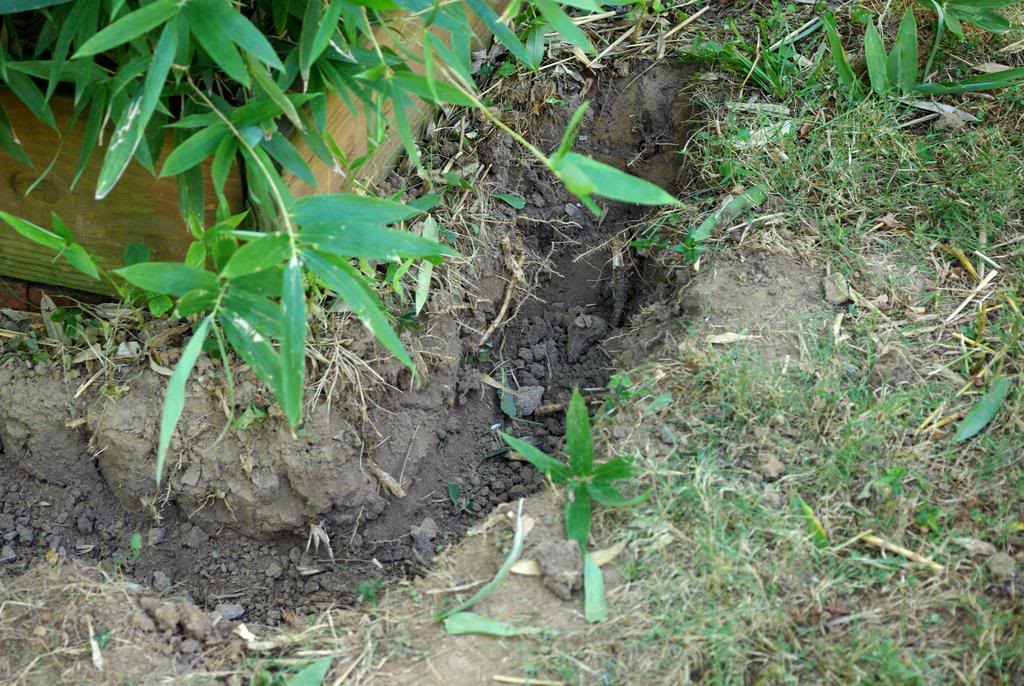

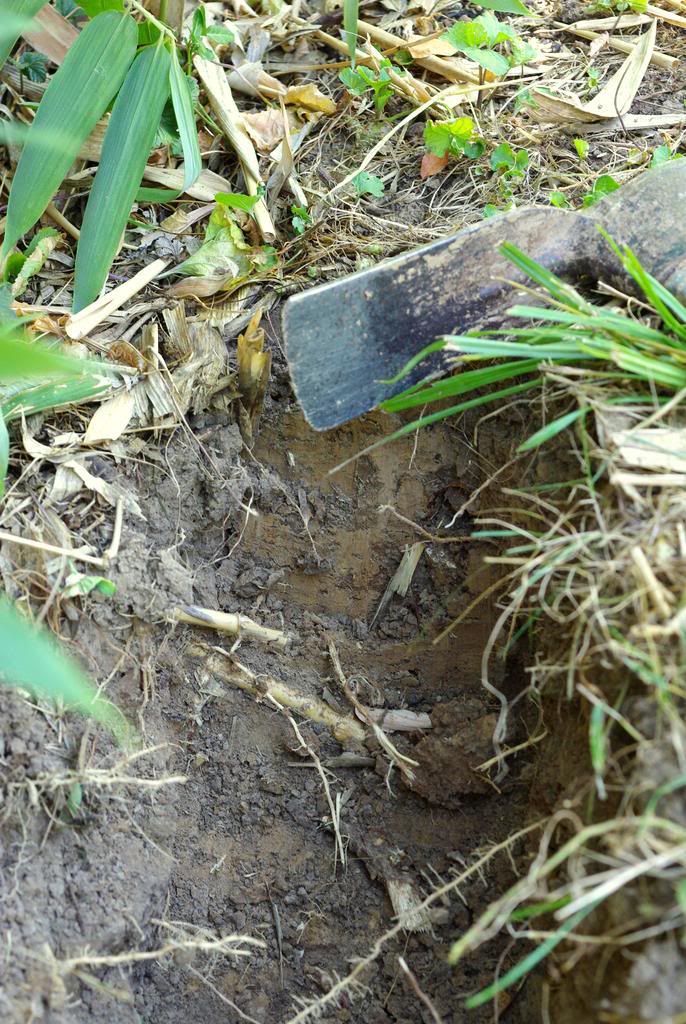


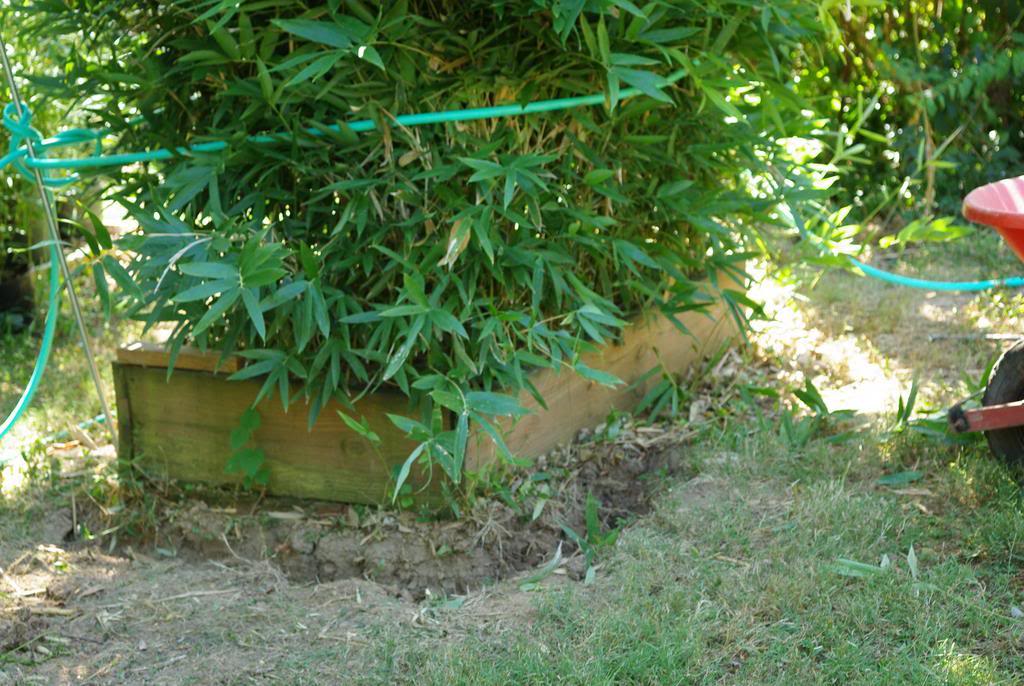
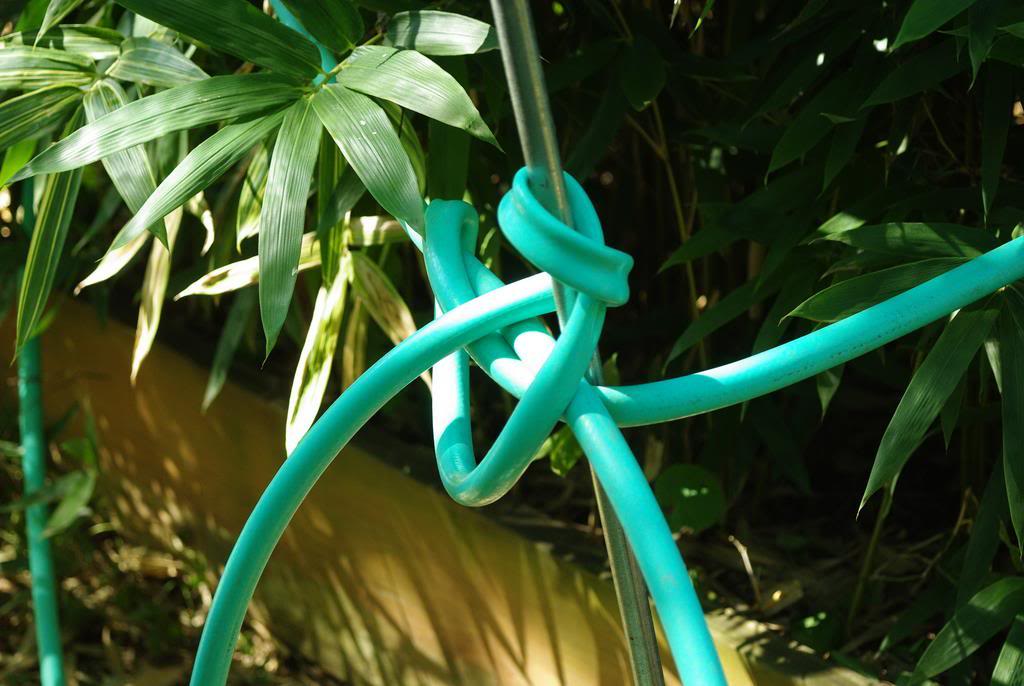



Excellent illustrations. This is what I'll have to do at my in-laws starting next year.
ReplyDeleteI created a mound last year with my propinqua and rhizomes are starting to reach the edge of the mound and expose themselves, and this is no more than a 5 inch mound. Phyllostachys rhizomes have never really gone deeper than a few inches around here which negates any threat of being invasive no matter how far they run. I really like the mound idea and might have to apply that to my parvifolia which intends to take over the garden.
ReplyDeletehahaha, i hope you wont get tired of those rhizomes. I've heard some people who gave up and totally dug the bamboos. Maybe it should have been contained in a big cement container, that will certainly quarantine them.
ReplyDeleteIt's actually not that hard to contain running bamboos once you figure out their growth pattern. I grow my boos in a fairly open space so I haven't had to worry much about it yet, but this guy grows lots of bamboos in fairly limited space so I'm pretty sure he knows all about containment.
ReplyDelete